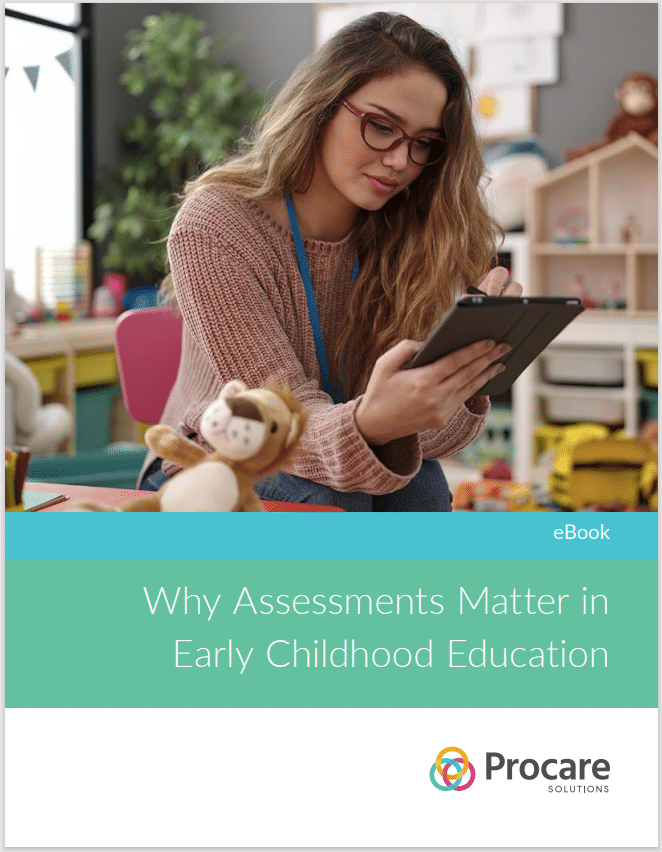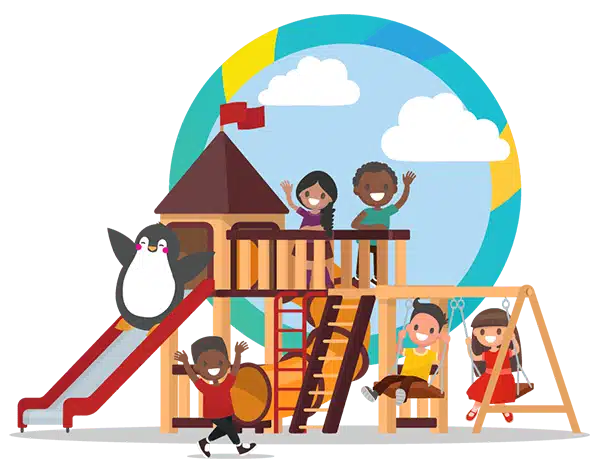
This blog was originally published in 2020 and was updated on October 17, 2023, with new information.
Understanding the six stages of play in a child care center is vital to the development of the children you serve. Play is one of the most important activities a child engages in every day. It is their main form of learning about themselves and the world around them, and allows them to practice the skills they need to grow.
Child psychologists agree that children learn best from actively engaging with their environment and interacting with others. Play gives children a safe, consequence-free way to explore the outcomes of behavior and discover the rules of the physical and social worlds.
In this article, we’ll talk about the six stages of play and how they are supported in child care centers. You’ll learn how kids progress through the stages of play during their development, the benefits of play, and the seven types of play identified by the National Institute of Play. We’ll also provide examples for each type and stage of play to inspire activity ideas for your child care center.
What are the Six Stages of Play?
Our knowledge about stages of play comes from Mildred Parten’s 1932 publication “Social Participation among Preschool Children,” a work still cited today. Parten defined six types of social play that are typical for children in different phases of child development. Children may progress through the stages at different rates, and the stages often overlap with each other, with children exhibiting behaviors from more than one stage at a time.
Let’s take a closer look at each stage of play and how it might look in your child care center.
Unoccupied Play
Unoccupied play, the first stage of play, occurs mostly between the ages of birth and three months. To adults, it may not appear to be play at all, because at this stage, the child is not occupied in any activity.
Examples of Unoccupied Play
Babies engaging in unoccupied play exhibit behaviors like:
- Observing their surroundings
- Exploring their bodies
- Making movements that don’t seem to have any purpose
But there is more going on than meets the eye, as these motions are how an infant learns to control their body and the environment. At this stage, infants love sensory activities that familiarize them with the senses of the body.
Read our Guide to Unoccupied Play for more ideas and examples.
Solitary Play
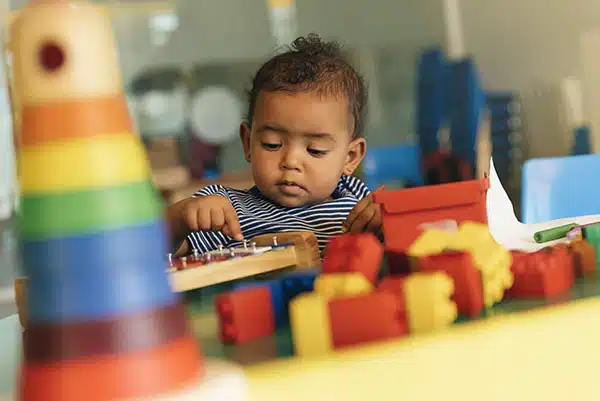
The next stage of play, most often seen between three months and two years of age, consists of playing alone or “solitary play.” Although children of any age can play alone, children before the age of 24-30 months typically do not have the communication skills to play effectively with other children. This is an important time in development, when children learn independence by occupying themselves.
Examples of Solitary Play
Solitary play can take many forms, such as:
- Looking at picture books or holding and interacting with dolls or toys
- Active play such as dancing, climbing on a playset or exploring
- Constructive play such as putting together a simple puzzle
- Imaginative play such as drawing or playing in a play house or with a tool bench
For more examples, check out our article on the Power of Solitary Play in Early Childhood Education.
Spectator/Onlooker Play
After the age of about two, kids begin to develop an interest in the activities of other children. This results in spectator/onlooker play, where they observe other children’s play without engaging in it themselves. During this stage, up to about three years of age, children learn from other kids and begin to form the building blocks of socialization.
Examples of Spectator/Onlooker Play
Children in this stage may ask questions or give requests while watching other children play, or simply observe. This is a good time to bring together kids in different age groups, as younger children in this phase often love watching and learning from older kids’ activities.
In spectator/onlooker play, you might see:
- One child asking another to mix and paint with a desired color
- A younger child waiting to be “served breakfast” from an older child at a play kitchen
- A child clapping when a peer’s toy hero “defeats” the bad guy
Learn how to nurture onlooker play with even more examples.
Parallel Play
In the parallel play stage, from about 2 to 4 years of age, children will play near each other, but not yet with each other. They may or may not be using the same toys or materials, but each child is directing their own activities. This stage is a combination of solitary play and spectator/onlooker play, as children observe and reflect what other kids are doing.
Examples of Parallel Play
In this stage, a child could see other kids playing with cars, pick up a car from a toy box and begin zooming the car around a town-themed play mat, without having the cars interact in a game or narrative. Or they might pick up an action figure instead, while imitating the busy, energetic play style of the children around them.
Play areas that allow free-form, creative activities such as sand trays, paint stations and scribble centers are well-suited to this type of play.
Interested in a deeper dive on parallel play? See why it’s so important for building social skills in the daycare environment.
Associative Play
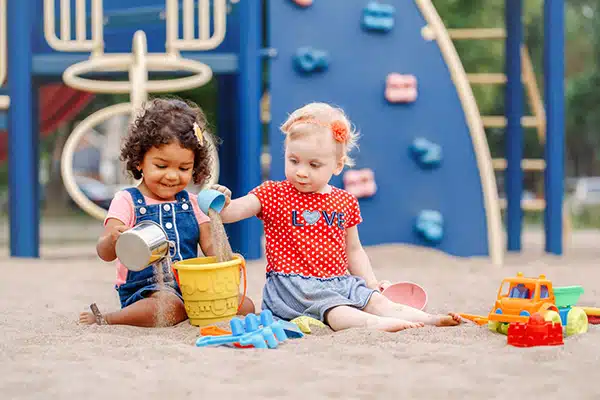
The associative play stage is when kids truly begin to play together, from about 3 to 5 years of age. They may take turns with toys and make early attempts at coordinating with each other by associating their respective play into a shared theme.
Their play directly engages with other children and their activities interact, but each child is making up their own rules or story and the play is largely unstructured. The object is simply playing together, not the game itself. That makes this a great stage to start introducing small group activities.
Examples of Associative Play
Parallel play develops into associative play when children’s activities interact. For instance:
- A child playing with a doll set makes their doll “friends” with another child’s doll and takes turns using the hair brush, but one child’s doll is a princess while the other child’s doll is a superhero.
- Two children may play on a jungle gym together, making sure to try the same activities at the same time, such as using the slide or swings together.
If you’re interested in fostering this stage of play we recommend checking out this article on the benefits of associative play.
Cooperative Play
In this final stage of play from ages 5 and up, kids begin to coordinate their activities with each other or play games with established rules. This requires a nuanced level of thinking and an understanding of social roles and boundaries.
Within cooperative play, kids learn important social skills like self-control and negotiating with other children to play in a way that satisfies everyone. At this stage, kids begin to understand the rules of sports and board games intended for all ages.
Examples of Cooperative Play
Any group game or activity with a narrative, theme or rules can fall under cooperative play. For instance:
- Where children in associative play might both play dress-up with no story or connection between the outfits, while in cooperative play, this could become a fashion show with themed outfits.
- A game of “cars” could turn into a race, with rules and a story arc.
- Instead of simply sharing the play kitchen, children may define play roles such as chef, waiter and customer to simulate a restaurant.
Get more examples and understand the benefits of cooperative play here.
What is the Role of Play in Child Care?
Every early child educator understands that a child should have daily time to play, both by themselves and with other children. A well-stocked child care center includes plenty of stations with themed toys and objects that lend themselves to imaginative activities, as well as free play areas such as soft mats where kids can act out their own games. That way, kids in all six stages will have a place to play.
Child care providers often guide children through age-appropriate activities, such as rule-based games for older children or play-pretend scenarios for younger ones, to help nurture their progress and track their development. When learning is play-based, children develop their innate curiosity and motivation to learn.
Some of the best-established benefits of play in child development include:
- Improving fine and gross motor skills
- Sharpening senses
- Improving empathy and emotional control
- Sharing and cooperating with others
- Learning to win and lose
- Improving imagination and creativity
It’s clear that the benefits of play extend across all five learning domains: social, emotional, cognitive, physical and linguistic. Since children’s learning is integrated, coordinating different skills to achieve results, most forms of play aid in more than one domain. For instance:
- Artistic activities like drawing can improve the senses, fine motor skills and imagination.
- Recess games like tag or hide-and-seek involve the physical skills of running and jumping, social skills of playing fair and respecting others, and cognitive skills of understanding rules.
- Dramatic play taps into linguistic skills for storytelling, social skills for negotiation and emotional skills for self-regulation.
How Else Do Kids Play?
Although Paten’s six stages of play are well-known and widely cited, there are many useful ways to categorize and understand play. For instance, the National Institute for Play identifies seven types of play:
- Attunement Play, when babies develop emotional connections to caregivers.
- Body Play & Movement, where kids engage their bodies in physical activity.
- Object Play, using toys and other objects to play.
- Social Play, including group games such as tag.
- Imaginative & Pretend Play, involving roleplay and simulated activities.
- Storytelling-Narrative Play, such as reading or making up stories.
- Creative Play, including art and music.
Unlike Paten’s stages of play, these types of play are not progressive phases of child development, but can mostly be demonstrated at any age. They describe the content of the play, rather than the social style.
Understanding different ways of thinking about play will help you develop more fun and effective play-based learning programs at your center.
Track Children’s Development With Vine Assessments!
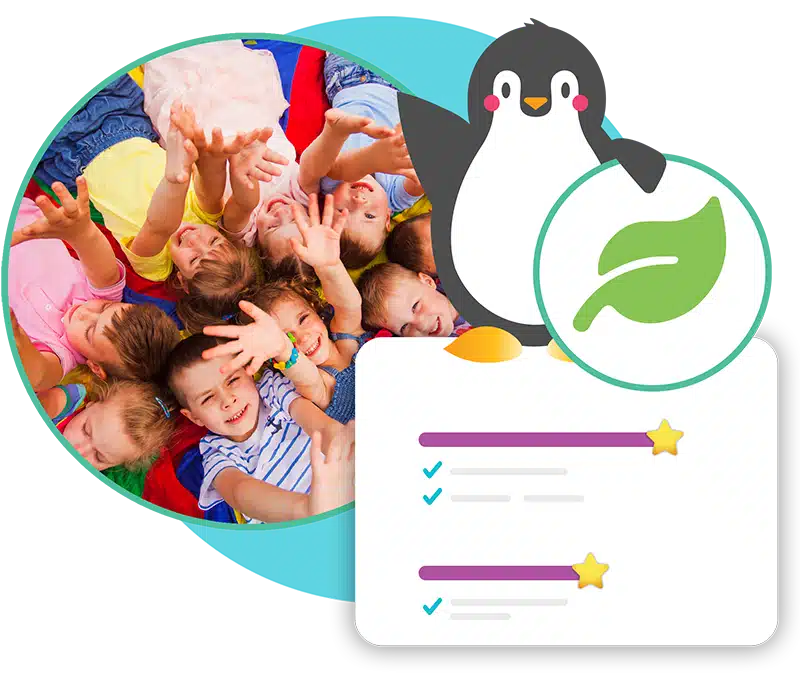
Developmentally appropriate play is an important part of how a child learns. And as children in your care grow, it’s vital that you track their developmental growth, which benefits your center and the children you serve.
Procare Solutions is the only provider of child care management software to offer proprietary early childhood assessments for children from birth to 5 years old.
Vine Assessments is an integrated framework (available to customers at no additional cost!) that gives early childhood educators a way to clearly articulate the growth and development of children in their care. Its assessments align with standards in all 50 states.
Teachers using Procare can tie their lessons and observations directly to the appropriate Vine Assessments indicator from the web-based software and Procare child care app.


